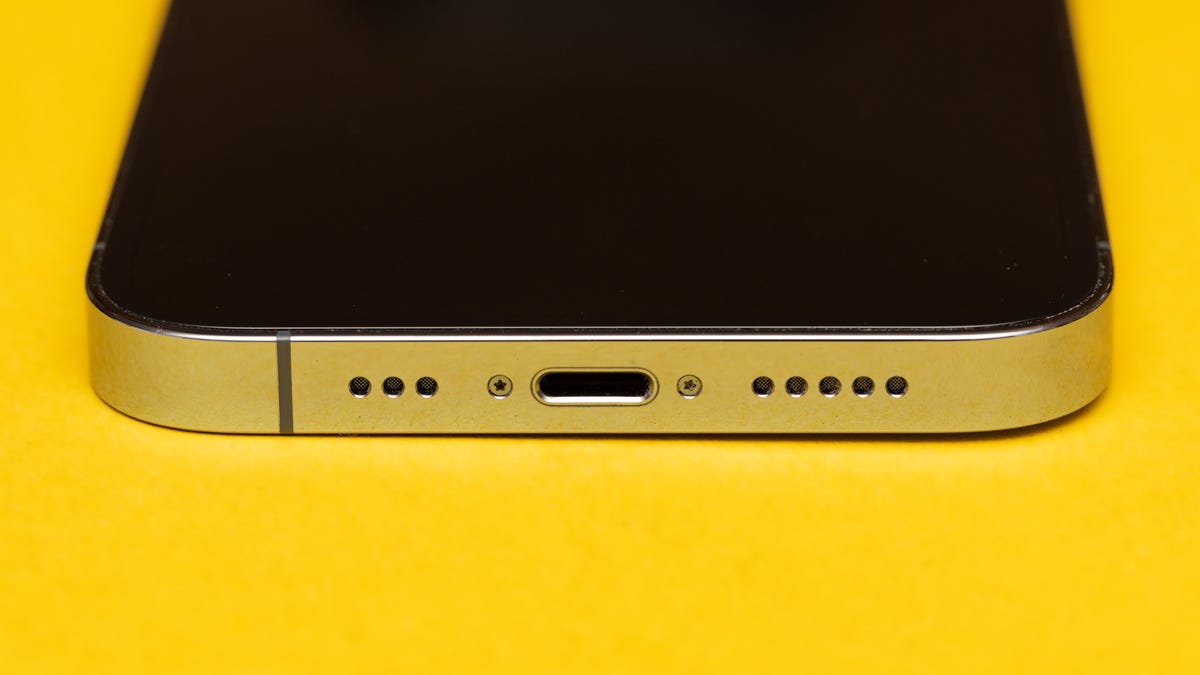The iPhone 15 May Finally Embrace USB-C: What Apple’s Move Means for You

When Apple last changed the iPhone’s charging port, with 2012’s iPhone 5, the move from the 30-pin connector that was first introduced on the iPod to the modern Lightning system was a radical shift. Like its predecessor, the Lightning port was an Apple-created connector, but it offered a host of improvements, not least that it was reversible and 80% smaller than the older option.
With the iPhone 15 line expected to be announced in a few days, Apple seems poised to change up the iPhone’s ports once again. This time the swap will be away from Lightning in favor of USB-C, the reversible USB standard that’s popular on everything from Android phones and Windows PCs to Apple’s own Macs and iPads.
For this move from Apple, you can thank the European Union, which adopted a law requiring universal USB-C phone chargers by 2024, thereby forcing the iPhone-maker’s hand.
In fact, though this shift may mean you’ll need new cables for your iPhone, there are plenty of benefits that USB-C brings that should make the transition much easier.
Last cable left standing
USB-C, left, and Lightning connectors may look similar, but USB-C is more powerful and on more devices.
Apple created and owned the Lightning and iPod connectors, making authentic cables expensive and at times hard to find. With USB-C, Apple is joining an existing standard it’s long supported. Not only are good USB-C cables readily available but also, because they’re so commonplace, the odds are that a number of iPhone 15 owners will already have some compatible accessories at their disposal.
Look at Apple’s lineup. It’s offered USB-C on its laptops dating back to 2015’s 12-inch MacBook. Today, all the company’s MacBooks and most iPads come with USB-C ports. The only iPad that Apple still sells with Lightning is the ninth-generation iPad, released in 2021. This is also the cheapest iPad and the last to have a physical home button.
Read more: Your Next iPhone Will Probably Need a New Charging Cable
Even accessories like Apple TV’s Siri remote have made the switch from Lightning to USB-C in the past year. Rumors are that Apple’s next updates to its AirPods line of earbuds and headphones will similarly follow suit, potentially starting with a new AirPods Pro case this fall.
Faster (wired) charging and data transfer could come to iPhone
Fast wired charging over USB-C has long been a staple on Android phones.
USB-C also offers perks like much faster charging and data speeds. Wired iPhone charging over a Lightning to USB-C cable (with a 20W or higher power adapter) can generally get the battery to 50% in 30 minutes, per Apple’s support page on the topic. USB-C is capable of charging at a much faster clip, as seen by its use in larger, more powerful devices like laptops.
For years, Android phones have blown past Lightning charging speeds, with companies like OnePlus and Samsung offering nearly full-battery top-ups in that same 30 minutes. USB-C cables are capable of delivering 100 watts of power with the right power brick, and because of their intercompatibility, you’d likely have no issue taking the charger from your iPad or MacBook and plugging it in to quickly juice up your iPhone.
A new rumor last week from 9to5Mac said Apple may bump up wired fast charging to 35 watts on some iPhone 15 models.
For data transfer — useful for people who still back up their data to a computer or transfer photos or videos through a cable — the latest Thunderbolt standard (which uses USB-C as the connector) allows for 40Gbps file transfer. Rumors have popped up that Apple, which helped create Thunderbolt alongside Intel, may bring the technology to the iPhone 15 line.
It should be noted that while Thunderbolt works through USB-C, Thunderbolt cables and accessories are often more expensive than their regular USB-C counterparts. If you care only about charging, then regular USB-C cables may be the better pick. We have more details on the differences here.
Even if Apple doesn’t go for full Thunderbolt support, a USB-C connector should have significantly higher limits than Lightning.
What about ‘Made for iPhone’ and MagSafe?
MFi-certified accessories will have an MFi logo, like this one, on the package.
As with everything Apple, there’s a strong element of “what they will actually do” that accompanies all speculation. Sure, USB-C is an incredibly capable connector, but how much of its potential Apple makes available will likely remain a mystery until the iPhone 15 is released.
Apple keeps tight control over its accessories and has long run the successful “Made for iPhone” (aka MFi) certification program for the peripherals that want to tap into the iPhone’s massive user base. While this almost assuredly makes Apple money (the company’s FAQ hints at the royalty it commands on accessories that are certified), it also helps consumers, as these accessories must meet certain Apple standards for connectivity and performance.
It’s why when shopping for accessories, like new Lightning cables, you should double-check that they’re MFi-certified. These products may be more expensive than the cheapest versions available on Amazon or eBay, but they’re likely to work better, longer and not be counterfeit and potentially damaging to your device.
When Apple sued Amazon over counterfeit cables in 2016, it warned that these accessories could “overheat, catch fire, and deliver a deadly electric shock to consumers while in normal use.”
Watch this: We Tried iOS 17 for Ourselves and We’re Impressed So Far
With the transition to USB-C, it remains to be seen how or if Apple will add its MFi touch to a standard that’s so readily available. That approach might limit some of the iPhone 15’s faster charging or data speeds to just accessories that pay to play in Apple’s ecosystem, even if any USB-C cable should be able to charge your phone. Some images that leaked online suggest Apple’s USB-C chargers may have an extra chip that could be for this exact MFi program.
It’s also possible that Apple puts the fastest Thunderbolt version in the Pro models (so they can better transfer higher-quality, larger ProRes videos), while the base iPhone 15 devices will be on a slower form of USB-C.
And then there’s MagSafe, the magnetic wireless charging system that Apple brought to its phones with the iPhone 12. Rumors have long persisted that the company is building toward a portless iPhone, which on the surface would be counter to Apple adding this new connector.
When the iPhone is on a MagSafe charger and in a horizontal position, StandBy mode kicks in.
But if Apple is preparing consumers for a new world, it’s possible that this transition helps further the groundwork and enables the company to push the value of MagSafe to more people. Apple has added a new StandBy feature in iOS 17 that turns docked, charging iPhones into little bedside, tabletop clocks.
And, perhaps in recognizing that it needs the industry’s help to make it commonplace, Apple even worked with the Wireless Power Consortium to bring magnets into the Qi2 wireless charging standard that may start appearing on other devices in the not-too-distant future.
The good news is that these answers should be only a few days away.
iPhone 14 Pro, Pro Max Get the Biggest Changes to Apple’s Phone Lineup
See all photos
Source: CNET















